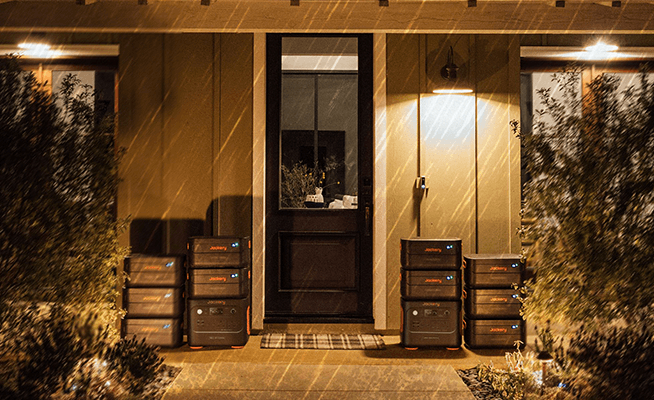As energy prices continue to be a significant issue for both homes and companies, it is more crucial than ever to know the Scottish Power price per kWh in 2025. This article outlines the rates for electricity and gas, as well as the standing charges and tariffs offered by one of the UK's largest energy companies.
If you own a house or a company, you may learn about Scottish Power's green energy alternatives, fixed and variable tariffs, and how their prices have changed recently. We also examine how these rates vary based on the property's size and the company's demands. This provides you with clear, up-to-date information that will help you make informed decisions about your energy expenses.
|
Key Takeaways: |
|
Scottish Power Prices Per kWh 2025
According to OFGEM, the average electricity cost in the UK, as defined by the energy price cap, will be £1,720 per year for the typical household starting July 1, 2025; however, this does not imply that your energy expenses are capped at £1,720. The restriction does not apply to the total amount paid; rather, it is a maximum per kWh. So the £1,720 'limit' only applies to families with ordinary use. Those who use more energy will spend more than £1,720 per year. (Those who use less energy will spend less than £1,720.)
What does this pricing limit imply per kWh? The new price ceiling was recently announced for Q3 2025, and for the three months from July 1 to September 30, 2025, the average per-unit direct debit expenses will be capped at £ 25.73 per kWh for electricity and £ 6.33 per kWh for gas, inclusive of VAT. This implies that the per-kWh cost of electricity will decline by 5% from July, while the price of gas will fall by 9%.
Standing prices have shifted, particularly for electricity. The new standing costs for electricity are £0.51 per day (a 5% decrease) and £0.29 per day for gas (a 9% reduction).
|
Gas & Electric per unit price caps (July - September 2025) |
Per kWh |
Per day |
|
Electricity |
25.73p/kWh |
51.37p/day |
|
Gas |
6.33p/kWh |
29.82p/day |
(Data Source: Nimblefins)
ScottishPower has been in business for almost 30 years and has been a member of the Big Six for the majority of that time. ScottishPower, a subsidiary of its parent firm Iberdrola (a Spanish multinational), operated out of its headquarters in Glasgow, Scotland.

ScottishPower offers a range of household and business energy rates and is dedicated to creating a cleaner future. All domestic green tariffs are guaranteed by 100% green power generated on their wind farms. For companies, they offer pricing comparable to that of a UK supplier, and they collaborate with various specialists, such as the Carbon Trust, to help firms become more energy-efficient.
ScottishPower is generally regarded as a decent provider, with a Trustpilot rating of 4.0 out of 5 based on over 56,000 reviews. As with everything, there are some criticisms, which mainly concern the increased tariff price. However, costs fluctuate daily due to variables such as the wholesale market. This implies that ScottishPower may be one of the more expensive providers on some days, while providing better value on others.
They had previously earned a lot of negative attention for having the worst customer service, but recent reports show that they have improved this aspect. ScottishPower is a founding member of Energy UK's Vulnerability Commitment, which aims to support vulnerable families. With a strong emphasis on renewable energy, they run multiple wind farms in the UK to provide power to clients.
ScottishPower Prices per kWh 2025
Here are some of the ScottishPower tariff choices available in 2024 for household and commercial energy users.
|
Tariff Name |
Electricity unit price (per kWh) & standing charge |
Gas unit price (per kWh) & standing charge |
Combined Monthly Cost (£) |
|
1-Year Flexi Price Tariff |
30.13p - unit rate 51.81p - standing charge |
7.9p - unit rate 29.61p - standing charge |
£195.78 |
|
Standard Variable Tariff |
27.21p - unit rate 51.81p - standing charge |
6.89p - unit rate 29.61p - standing charge |
£176.18 |
(Data Source: Switchwhiz)
Average Scottish Power Prices Per Property
|
Property Type |
Monthly |
Yearly |
|
1 bedroom flat |
£56.07 |
£672.89 |
|
2-bedroom flat |
£108.54 |
£1302.42 |
|
2-bedroom house |
£151.62 |
£1,819.42 |
|
3-bedroom house |
£218.47 |
£2,621.61 |
|
4-bedroom house |
£273.39 |
£3,280.08 |
(Data Source: Electricity Prices)
Scottish Power Tariffs
Scottish Power offers a variety of pricing options for both residential and commercial customers. All tariffs provide payment alternatives and the opportunity to manage the account in various ways.

Scottish Power Fixed Rate Tariffs
Scottish Power puts you in complete control when it comes to acquiring a fixed-rate energy tariff for your house or company. Once you've agreed on a package, you may monitor your account online or using the app to remain on top of your energy expenses.
Some Scottish Power home energy tariffs may be less expensive than the price limit, so it's always worth obtaining an estimate to see if you can save.
Scottish Power Home Energy Tariffs
Standard Variable: Scottish Power's standard variable tariff has no exit fees or contract termination dates.
Cap Tracker: The Cap Tracker costs £7.50 (including VAT) per year, which is less than the introductory variable rate that follows the price cap. This tariff has no exit costs.
Flexi Price: a flexible tariff with a set unit rate that is periodically evaluated.
Exit fee: £50 per fuel.
Scottish Power Fixed Business Tariff
Fixed for Business: Fixed gas and electricity rates for up to three years.
Renewable for Business: 100% renewable business power guaranteed by REGOs with set prices for up to three years.
Standard Variable: The unit rate may fluctuate at any time.
Scottish Power Green Performance
Scottish Power has excellent ecological credentials, generating 100% of its power from UK-based wind farms. They have approximately 38 onshore sites with 1,157 turbines to feed their clients around the UK. They are a market leader in sustainable UK energy, offering a wide range of green solutions.
Scottish Power Fuel Mix
Any power we consume is produced from a variety of fuels, including nuclear, coal, and renewable sources (wind, water, and sunlight). The quantity of each fuel provided determines a supplier's fuel mix.
This is Scottish Power's gas and electricity fuel mix:
|
Supplier |
Coal |
Gas |
Nuclear |
Renewable |
Other |
CO2 (g/kWh) |
Nuclear Waste (g/kWh) |
|
ScottishPower |
13 |
60 |
9 |
11 |
7 |
415 |
0.0006 |
|
UK Average |
6.3 |
35 |
12.7 |
43.2 |
2.8 |
222 |
0.00076 |
(Data Source: The Energy Shop)
Please note that the figures above represent Scottish Power's overall fuel mix, which includes fuel produced for non-green tariffs. The power for its green rates is 100% renewable.
Scottish Power Summary
|
Features |
Service Offered |
|
Online Billing |
Yes |
|
Direct Debit |
Yes (only payment option available) |
|
Smart Meters |
Yes |
|
Mobile App |
Yes, for SME customers |
|
Flexible Payments |
Monthly Fixed DD, Monthly Variable and Quarterly Variable |
|
Renewable Energy |
Yes |
|
Paper Billing |
Yes |
|
Priority Register |
Yes, customers can contact Scottish Power Customer Services to update |
Scottish Power Business
Scottish Power provides gas and energy to companies of all sizes, as well as the capacity to offer a range of specialised products, including solar panels and EV charging solutions.
Scottish Power's rates are supported by 100% green power generated by their 1,157 wind turbines, demonstrating their strong commitment to renewable energy.
ScottishPower Business Electricity Prices June 2025
|
Contract Length |
Unit Rate |
Standing Charge |
|
1-Year |
24.7p |
90.3p |
|
2-Years |
24.2p |
90.3p |
|
3-Years |
24p |
90.3p |
(Data Source: Power Compare)
Prices were obtained from our panel of providers in June 2025, based on a yearly use of 25,000 kWh. Business power rates fluctuate daily depending on use and market factors.
ScottishPower Business Gas Prices June 2025
|
Contract Length |
Unit Rate |
Standing Charge |
|
1-Year |
7.4p |
35.8p |
|
2-Years |
7.2p |
35.8p |
|
3-Years |
7.0p |
35.8p |
(Data Source: Power Compare)
Prices were obtained from our panel of providers in June 2025, based on a yearly use of 25,000 kWh. Business petrol costs fluctuate daily, depending on use and market factors.
Have Scottish Power Prices Risen in 2025?
ScottishPower energy prices have increased twice in 2025 as a consequence of the double increase in the energy price ceiling. However, with the price limit set to decrease in July, ScottishPower's prices will also decline.

All energy providers in the UK are subject to Ofgem's energy price limit, including ScottishPower. The cap rate determines the maximum amount that providers may charge for average usage of their regular variable tariffs. Most consumers have not had to worry about this since they used to fix and switch to avoid being placed on a variable rate.
However, when wholesale energy costs climbed dramatically at the end of 2021, exceeding the price limit, providers removed fixed agreements from the market. This meant that once consumers' fixed packages expired, there was nothing to transfer to; therefore, millions of homes are stuck on ordinary variable pricing.
The table below illustrates how the price cap and Energy Price Guarantee have influenced ScottishPower's standard variable tariff pricing over time.
|
Time period |
Price cap level |
Energy Price Guarantee level |
ScottishPower standard variable price |
|
July 2023 - October 2023 |
£1,976 |
£3,000 |
£1,976 |
|
October 2023 - January 2024 |
£1,834 |
£3,000 |
£1,834 |
|
January 2024 - April 2024 |
£1,928 |
£3,000 |
£1,928 |
|
April 2024 - July 2024 |
£1,690 |
£3,000 |
£1,688 |
|
July 2024 - October 2024 |
£1,568 |
£3,000 |
£1,568 |
|
October 2024 - January 2025 |
£1,717 |
£3,000 |
£1,717 |
|
January 2025 - April 2025 |
£1,738 |
£3,000 |
£1,738 |
|
April 2025 - July 2025 |
£1,849 |
£3,000 |
£1,849 |
|
July 2025 - October 2025 |
£1,720 |
£3,000 |
TBC |
(Data Source: Uswitch)
Why Switch To Scottish Power
Most people switch energy providers to save money. Still, if you're one of the growing number of families that are becoming increasingly environmentally conscious, consider switching to a supplier that offers green energy.
Although several providers promise to provide 100% green power, not all offers meet the green standards you would expect. However, Scottish Power, which solely produces renewable power from wind farms in the United Kingdom, does not face this difficulty.
If you're looking for an ecologically conscious power provider, Scottish Power's household green rates are backed by 100% renewable electricity. You'll also enjoy the peace of mind that comes with moving to one of the UK's largest energy providers.
Will There Be Another ScottishPower Price Rise in 2025?
At this time, it is anticipated that the limit on energy prices will increase modestly when it is next published in November.
What Should I Do about the Scottish Power Price Rises?
There are several fixed packages on the market that consumers can switch to, which offer savings against the price cap and ScottishPower's variable tariff costs. Compare energy rates with online tools to find what energy offers are available in your region.
Tips for Saving Your Electric Bills When Power Prices Rise
Rising power prices can strain any budget, but numerous effective strategies exist to reduce your electricity consumption significantly. Here are some of the best tips for saving on your electric bills, broken down by category:

Tip 1: Smart HVAC and Home Sealing
Heating and cooling typically account for the largest portion of your electric bill, so small changes here can make a significant difference. Install a programmable or smart thermostat and set it a few degrees higher in the summer and a few degrees lower in the winter when you are away or sleeping. For summer savings, use ceiling fans to make a room feel 4°F to 6°F cooler, allowing you to set the air conditioner at a higher setting.
Crucially, regularly replace or clean your HVAC air filters (every 1-3 months), as clogged filters significantly reduce efficiency, forcing the system to work harder and use more electricity. Finally, use weather stripping and caulk to seal air leaks around doors and windows, preventing expensive conditioned air from escaping your home.
Tip 2: Appliance and Electronic Management
Combat "vampire power," which is the electricity consumed by devices even when they are turned off or in standby mode (like TVs, phone chargers, and gaming consoles). The easiest way to stop this hidden energy drain is by plugging electronics into power strips and switching the strips off when the devices are not in active use.
When purchasing a new appliance, always look for the ENERGY STAR® label, as these products are certified to use significantly less energy than standard models. For your refrigerator, ensure the door seals are tight, keep the coils clean, and set the temperature to a standard range of 37°F to 40°F to prevent overcooling.
Tip 3: Water and Lighting Efficiency
Heating water is a significant energy user in the home, so focus on minimising hot water consumption. Lower your water heater's thermostat to 120°F—this setting is sufficient for most homes, reducing standby heating losses and the risk of scalding. For laundry, always run full loads and wash your clothes using the cold water setting, since heating the water accounts for about 90% of the washing machine's energy use.
For your lighting, replace any remaining incandescent bulbs with LEDs (Light-Emitting Diodes), which use up to 90% less energy and last much longer. Make it a habit to turn off lights whenever you leave a room.
Tip 4: Kitchen and Cooking Habits
Adopt simple cooking habits to reduce the electricity needed to run your stove and oven. When possible, use smaller appliances, such as a microwave, toaster oven, or air fryer, instead of a full-sized oven, as they consume less energy and heat up more quickly.
If you must use a conventional oven, avoid opening the door to check on food, as this can lower the internal temperature by up to 25°F, requiring it to use more electricity to recover. For your dishwasher, run only full loads and select the air-dry cycle or open the door after the wash to avoid the energy-intensive heated drying cycle.
Tip 5: Use an Alternative Power Source
You can connect appliances such as refrigerators, lights, computers, and Wi-Fi routers to a power station or generator, like the Jackery Portable Power Station. By running these items off the battery instead of the wall outlet during high-rate times, you reduce the usage recorded by your utility meter.
A Jackery Portable Power Station, especially when paired with Jackery Solar Panels (creating a Jackery Solar Generator), can help you save on electric bills primarily through a strategy called Time-of-Use (TOU) arbitrage and by reducing grid reliance.

Jackery Portable Power Stations for Saving Your Electric Bills
The increase in ScottishPower prices, particularly under the UK's energy price cap changes, makes energy-saving strategies more critical. A Jackery Portable Power Station can help reduce your electricity bills by allowing you to take advantage of Time-of-Use (TOU) tariffs and free solar power, effectively bypassing the most expensive peak rates.
ScottishPower offers specific tariffs and programs, like the Power Saver program and their EV Saver tariff, which are based on Time-of-Use (TOU) rates. This is the primary way a Jackery can save you money. You plug your Jackery unit into the wall and charge its battery during the cheapest periods, such as late at night (e.g., midnight to 5 am on their EV tariff) or during the Half-Price Weekends (Saturday and Sunday, 11 am - 4 pm).
You then unplug the Jackery from the wall and use the stored, cheaper electricity to power essential devices and appliances during the most expensive peak-demand times (typically weekday evenings).
Jackery Explorer 3000 v2 Portable Power Station
The Jackery Explorer 3000 v2 can help you save on electric bills through two main strategies: Time-of-Use (TOU) arbitrage and maximising solar energy consumption.

Time-of-Use (TOU) Arbitrage: Many utility companies employ a Time-of-Use pricing structure, where the cost of electricity fluctuates throughout the day, typically being highest during "peak" hours (e.g., late afternoon/evening) and lowest during "off-peak" hours (e.g., overnight). You can use the unit's Charging Plan feature via the smart app to schedule the power station to charge from the wall outlet only during the cheapest, off-peak hours (e.g., 10 pm to 6 am).
You can then power your high-draw appliances or essential devices (like refrigerators, fans, or lights) using the battery during the expensive peak hours, effectively avoiding the high electricity rates. By shifting your power consumption from the grid's peak rates to the battery's stored power (charged at off-peak rates), you reduce your overall cost for the electricity you use.
Maximising Solar Energy Consumption: When paired with Jackery SolarSaga 200W solar panels (sold separately), the Explorer 3000 v2 functions as a solar generator. The unit has a mode that prioritises using solar energy to supply your home or charge the power station first, reducing your reliance on expensive grid electricity.
By capturing free energy from the sun with the solar panels, you offset the amount of electricity you have to purchase from the utility company. This is free energy once the initial cost of the generator and panels is recovered.
High Capacity and Output for Home Backup: With a large 3,072Wh capacity and 3,600W continuous output, the power station can run essential high-wattage appliances (like a refrigerator, lights, and Wi-Fi router) for an extended period. This capability is crucial for running your home on cheaper, stored energy during peak times or relying entirely on solar power, which directly lowers your utility consumption.
Jackery Explorer 2000 Plus Portable Power Station
The Jackery Explorer 2000 Plus, particularly when used as part of a Jackery Solar Generator 2000 Plus setup with compatible solar panels, can help reduce your electricity bills primarily through a process called solar energy shifting, also known as peak shaving.
The core strategy for saving money involves charging the power station for free with solar energy during the day and then using that stored, free electricity to select household appliances and electronics later, thereby reducing the amount of power you purchase from the utility grid.

Solar Charging Capability (with Solar Panels): The most significant saving feature is the ability to recharge the power station using compatible Jackery SolarSaga solar panels, converting sunlight into free electricity. This directly offsets the need for grid power. Jackery solar panels often feature high conversion efficiency (up to 25%), meaning they can charge the power station relatively quickly and efficiently, maximising the amount of free power captured.
Charging during Off-Peak: If your utility company uses Time-of-Use billing (where electricity is cheaper during certain "off-peak" hours, typically at night or midday), you can charge the Explorer 2000 Plus using the grid when rates are low. You can then use the stored, cheaper battery power to run high-usage appliances (like a refrigerator or fan) during expensive "peak" hours (often weekday evenings).
Reduced Grid Reliance: The unit's 2042.8 Wh (or 2 kWh) base capacity (expandable up to 12 kWh with additional battery packs) enables you to power everyday appliances, such as refrigerators, lights, Wi-Fi routers, laptops, and fans. By running these from the stored solar or off-peak power, you lower your consumption from the utility grid.
LiFePO4 Battery: The unit uses a durable Lithium Iron Phosphate (LiFePO4) battery, which is rated for a long lifecycle (e.g., 4000 cycles to 70%+ capacity). This longevity means the cost-saving benefits of the unit can be realised over many years, improving the overall return on investment.
FAQs
The following are the frequently asked questions about the Scottish Power price per kWh:
1. Why is Scottish Power's standing charge so high?
Why are the standing costs so high? Standing charges are high due to the high wholesale energy costs that continue to influence the UK energy market. A standing fee helps cover the incidental expenses of running your house with energy, which is now more expensive than it was previously.
2. Is ScottishPower cheaper than Octopus?
The Tracker Tariff offered by Octopus Energy may be more affordable than the fixed rates offered by ScottishPower. The prices that are found in the wholesale market will determine this.
3. Is Scottish Power the most expensive?
Although one of the most expensive energy providers in the United Kingdom, Scottish Power remains a major energy supplier in the country. The results of a recent poll conducted by Look After My Bills indicate that the fixed packages offered by Scottish Power are much higher than the energy price limit set by Ofgem.
4. How can I lower my Scottish Power bill?
Provided you have a low income and live in Scotland, you may apply for a refund, provided you satisfy the requirements. Learn more about the Warm Home Discount initiative. Hardship Fund: If you have a low income and are struggling to pay your energy costs, you might be eligible for the ScottishPower Hardship Fund.
5. How many kWh per day is normal?
A household in the United Kingdom typically uses between 8 and 10 kilowatt-hours (kWh) of electricity per day. On the other hand, this may vary significantly depending on variables such as the size of the home, the types of appliances used, and the energy-saving measures taken. For example, an apartment or house with one bedroom, accommodating one to two occupants, may use around 4.9 kWh per day. In contrast, a home with four or more bedrooms and four to five residents would consume 11.3 kWh or more per day.
Final Thoughts
Scottish Power remains a significant player in the UK's energy market, offering a range of rates to cater to the needs of both residential and commercial customers. Prices increased in 2025 due to the energy cap, but the firm remains a good option since it sources its electricity exclusively from UK wind farms.
Knowing Scottish Ability's current prices enables you to make an informed choice, whether you're most concerned about cost-effectiveness, environmental impact, or dependable service. To ensure you're not overspending, consider exploring fixed tariff options. When wholesale markets change, the best way to keep your energy costs under control is to remain up to date.


































































































